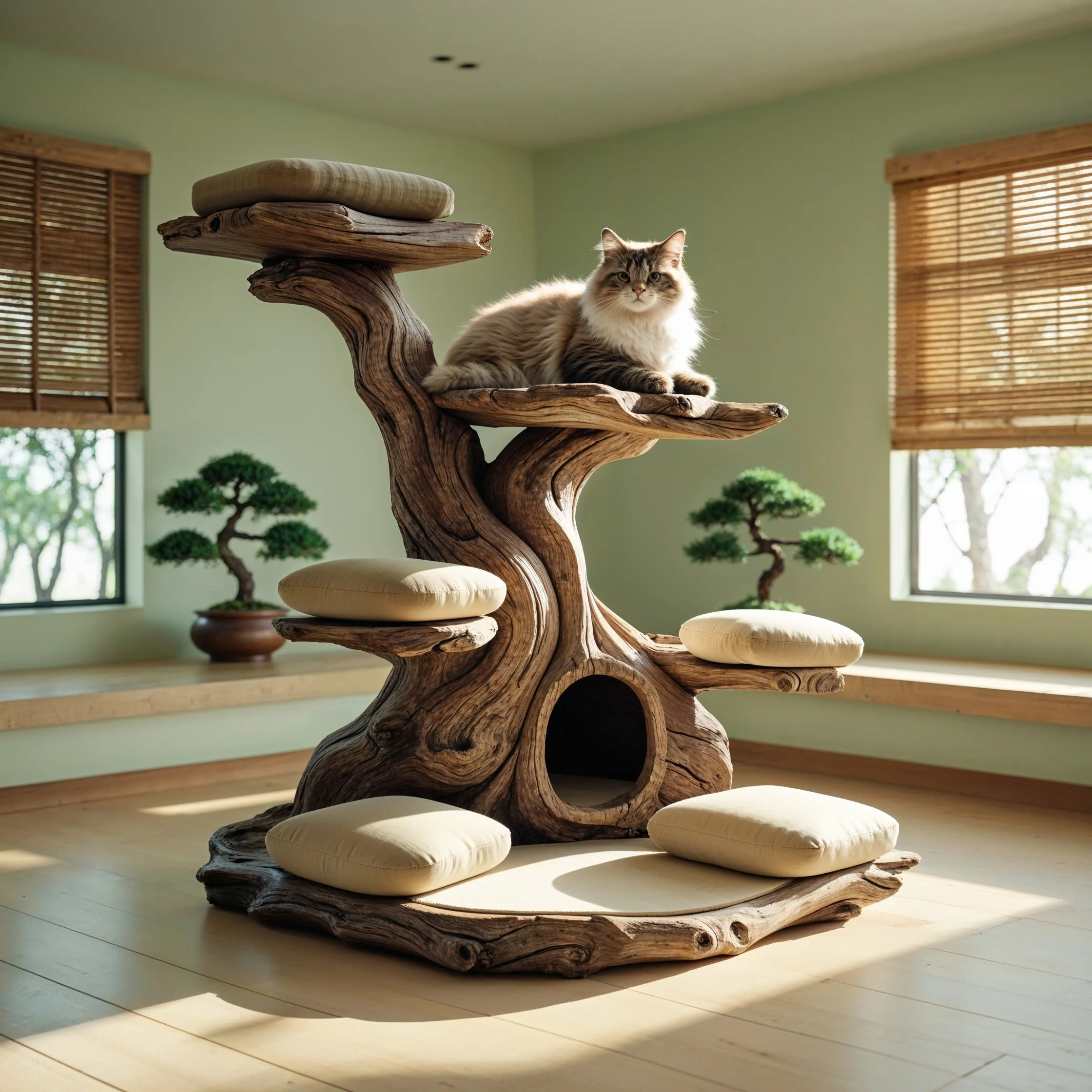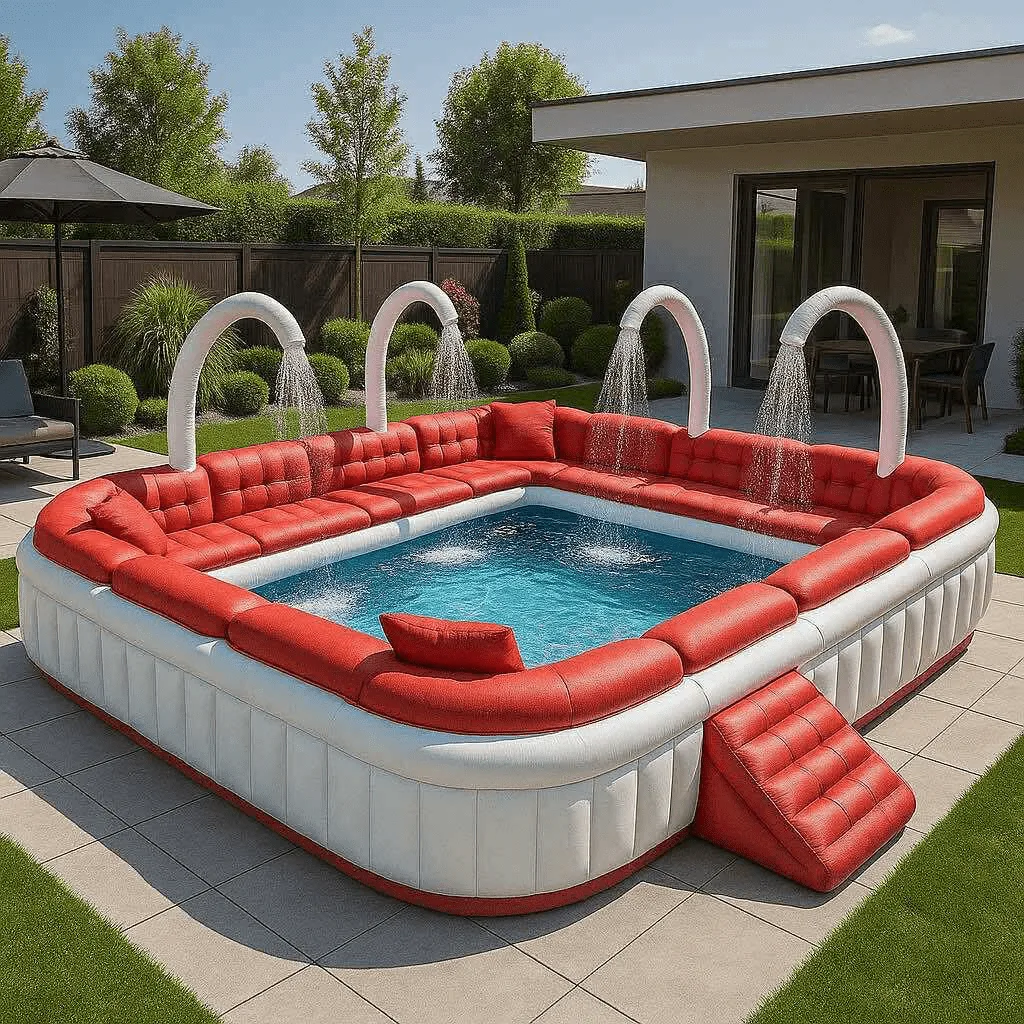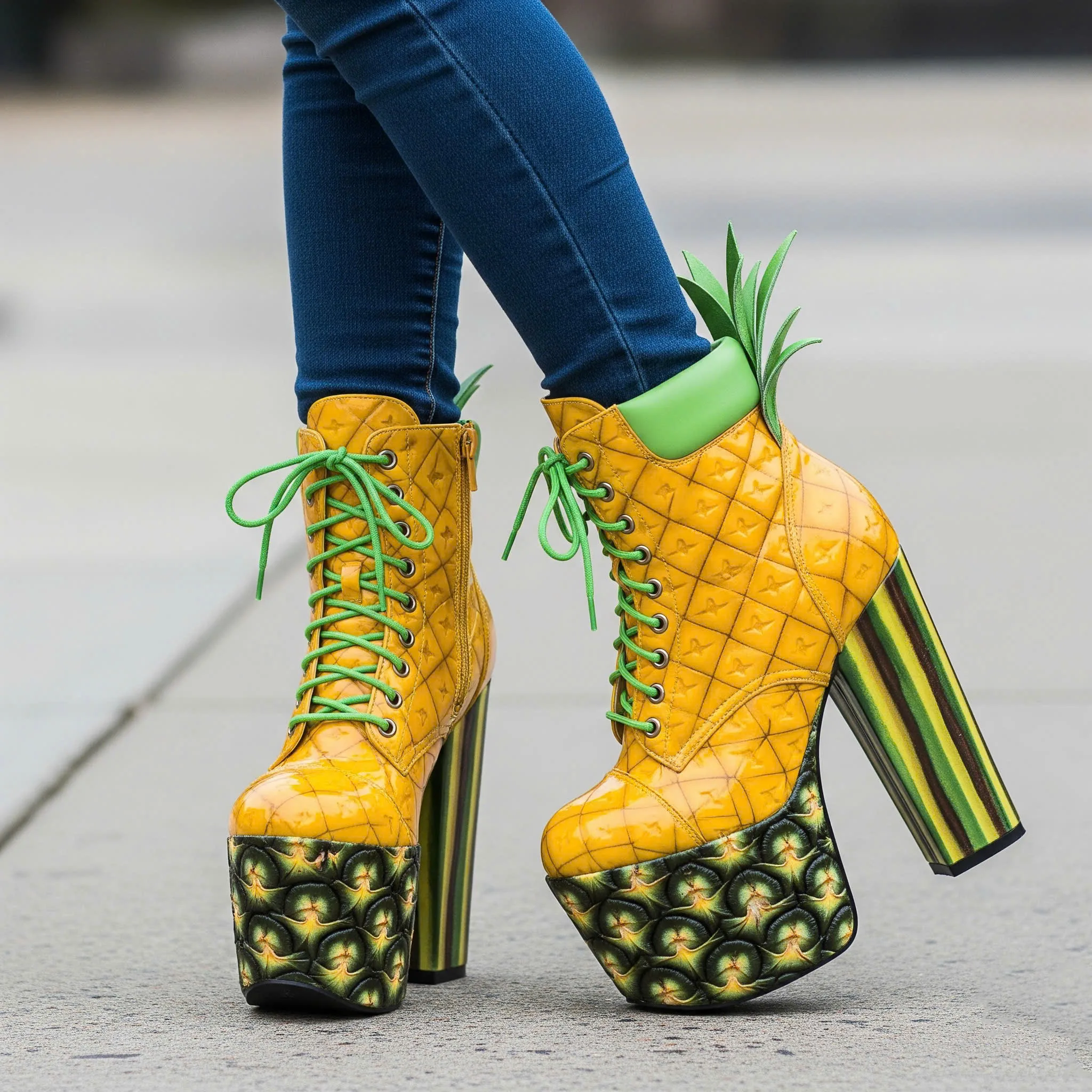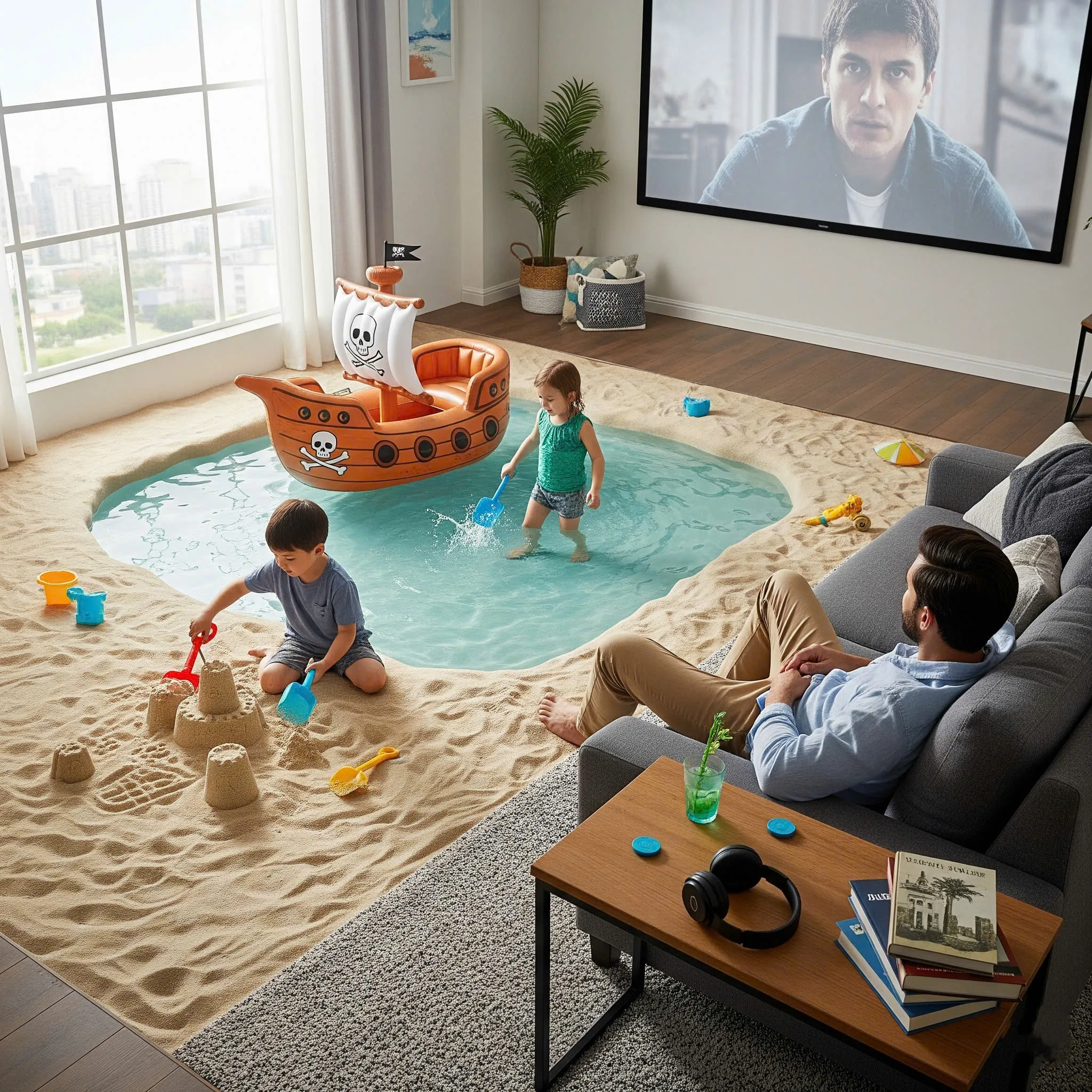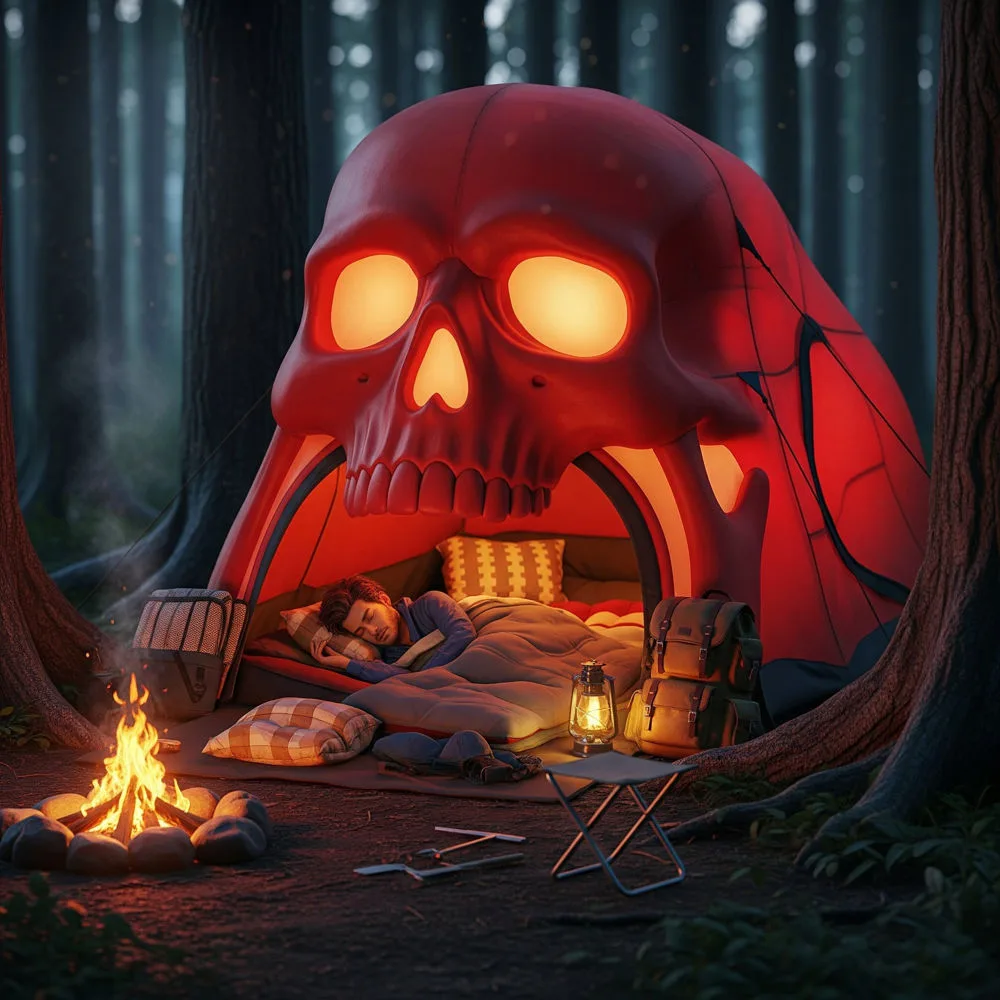Elevating Cat Furniture Into Natural Masterpieces
In a world where pet ownership has become synonymous with style, personality, and sustainability, the humble cat tree has undergone a dramatic evolution. Gone are the days of carpet-covered poles and faux fur platforms. Enter the world of Natural Driftwood Cat Trees — architectural wonders crafted from ocean-sculpted driftwood, tailored to both your cat’s instincts and your home’s aesthetic.
These aren’t just scratching posts. They’re sculptural art pieces. They’re eco-conscious statements. They’re luxurious feline playgrounds that seamlessly blend with modern boho, rustic, coastal, and even minimalist interiors. Whether you’re a devoted cat parent or a design aficionado — or both — Natural Driftwood Cat Trees speak to your soul.
But what exactly makes these organic creations so special? Why are pet lovers and interior designers alike swooning over them? And how do they transform your space while enriching your cat’s daily life? Let’s climb into the roots of this trend.

The Wild Charm of Natural Driftwood Cat Trees
What Exactly Is a Driftwood Cat Tree?
Nature’s Sculpture Meets Modern Function
A Natural Driftwood Cat Tree is a feline climbing structure made from authentic driftwood—wood that has been weathered by water, time, and nature. Each branch is smoothed by rivers or oceans, bleached by the sun, and uniquely shaped. When combined and stabilized into a cat tree design, they offer a rustic yet elegant look, often topped with soft cushions or sisal-wrapped sections for scratching.
Unlike traditional cat trees, which prioritize function over form, driftwood models harmonize both. They’re part furniture, part climbing gym, and 100% art.
One-of-a-Kind Aesthetic
No two pieces of driftwood are alike. Each Natural Driftwood Cat Tree becomes a one-of-a-kind sculpture. The twisted limbs, the gnarled knots, the sun-bleached hues—all come together to create something that feels ancient, wild, and poetic. This uniqueness means your cat gets a habitat no other feline in the world has.
Why Cats Love Them
Natural Texture, Natural Instinct
Cats instinctively love to climb, scratch, perch, and observe. Driftwood offers a satisfying texture for scratching—much closer to bark and trees they would encounter in nature. It satisfies their instincts in a way synthetic carpet never could.
Elevated Perches and Hideaways
Many designs incorporate elevated platforms or cubbies made of natural materials like linen, canvas, or faux fur. These become the perfect perch for a cat to observe their kingdom — you and your home — from above.
Safe Exploration and Exercise
Multi-level branches allow for healthy physical activity, encouraging jumping, balancing, and climbing in a way that’s more dynamic than standard vertical posts. For indoor cats, it’s a world of enrichment, providing stimulation they might otherwise miss.

Why Humans Love Them
Designed to Complement Your Space
Where traditional cat trees stick out like beige towers, Natural Driftwood Cat Trees blend into your space. Whether you live in a beachfront cottage or a Scandinavian-style apartment, these pieces echo tones of natural elegance and wilderness. They work as well in a sun-drenched reading nook as they do beside a fireplace or under a picture window.
A Sustainable Pet Furniture Choice
Most driftwood used in these cat trees is ethically sourced—collected from naturally fallen wood along beaches or riverbanks, not cut down. Many artisans also reuse wood that would otherwise go to waste. It’s eco-luxury in its purest form.
A Long-Lasting Investment
These cat trees aren’t made from particle board or flimsy materials. Driftwood is hardy. When properly treated and stabilized, it can last for years—even decades. Instead of replacing cheaply made cat towers every year, this becomes a lifetime feature in your home.
Conversation Piece for Guests
It’s hard not to comment on a majestic tree sculpture in the middle of a living room—especially when a graceful cat is lounging atop it. These trees aren’t just furniture, they’re storytelling pieces. People will ask.
Styles and Customizations
The Coastal Canopy
Ideal for breezy, light-filled homes, this style uses pale driftwood, white linen cushions, and minimal accents. It feels like a tree branch swept ashore and lovingly repurposed.
The Boho Tree Temple
Think colorful textile hammocks, braided cotton accents, and brass fixtures. These trees embrace texture and culture—perfect for eclectic homes full of plants, books, and treasures.
The Modern Minimalist Tower
Raw wood, clean angles, and neutral tones. Some designs even use concrete or matte black metal for contrast. It’s for those who love a sleek home but still want a slice of nature.
The Woodland Escape
Rich, dark-stained driftwood, mossy accents, and built-in planters with faux greenery. It’s a forest floor fantasy, perfect for fairycore fans and nature lovers.

Building and Installing a Driftwood Cat Tree
Ready-Made vs. Custom Builds
There are gorgeous artisan-made cat trees available online or in select boutique pet stores. But some cat lovers opt to go DIY, especially if they live near coasts or rivers.
Custom builds allow:
- Tailoring height and width to your room
- Choosing cushions to match decor
- Adding multiple branches for multi-cat households
- Incorporating built-in feeding or watering stations
Whether you’re commissioning a piece or building one yourself, the key is to ensure it’s sturdy, sealed, and safe.
Stabilizing the Base
Driftwood is often top-heavy due to branching limbs. A heavy base—made from wood slab, stone, or weighted steel—is essential for safety.
Finishing the Wood
The wood must be:
- Sanded to remove splinters
- Treated to kill bacteria or pests
- Sealed with non-toxic finishes (especially important for cat safety)
Platform and Cushion Design
Add soft linen or felt-covered platforms for lounging, and incorporate scratching areas using natural sisal or hemp rope. Some designs include swinging hammocks or ladder-style steps.
Caring for Your Natural Driftwood Cat Tree
Cleaning Tips
Use a microfiber cloth and gentle natural cleaner to wipe down wood. Avoid saturating with water, as natural wood can warp or crack. Detachable cushions should be machine washable or have removable covers.
Re-tightening Screws and Fixtures
Over time, climbing cats may loosen connections. A quick monthly inspection keeps things safe and secure.
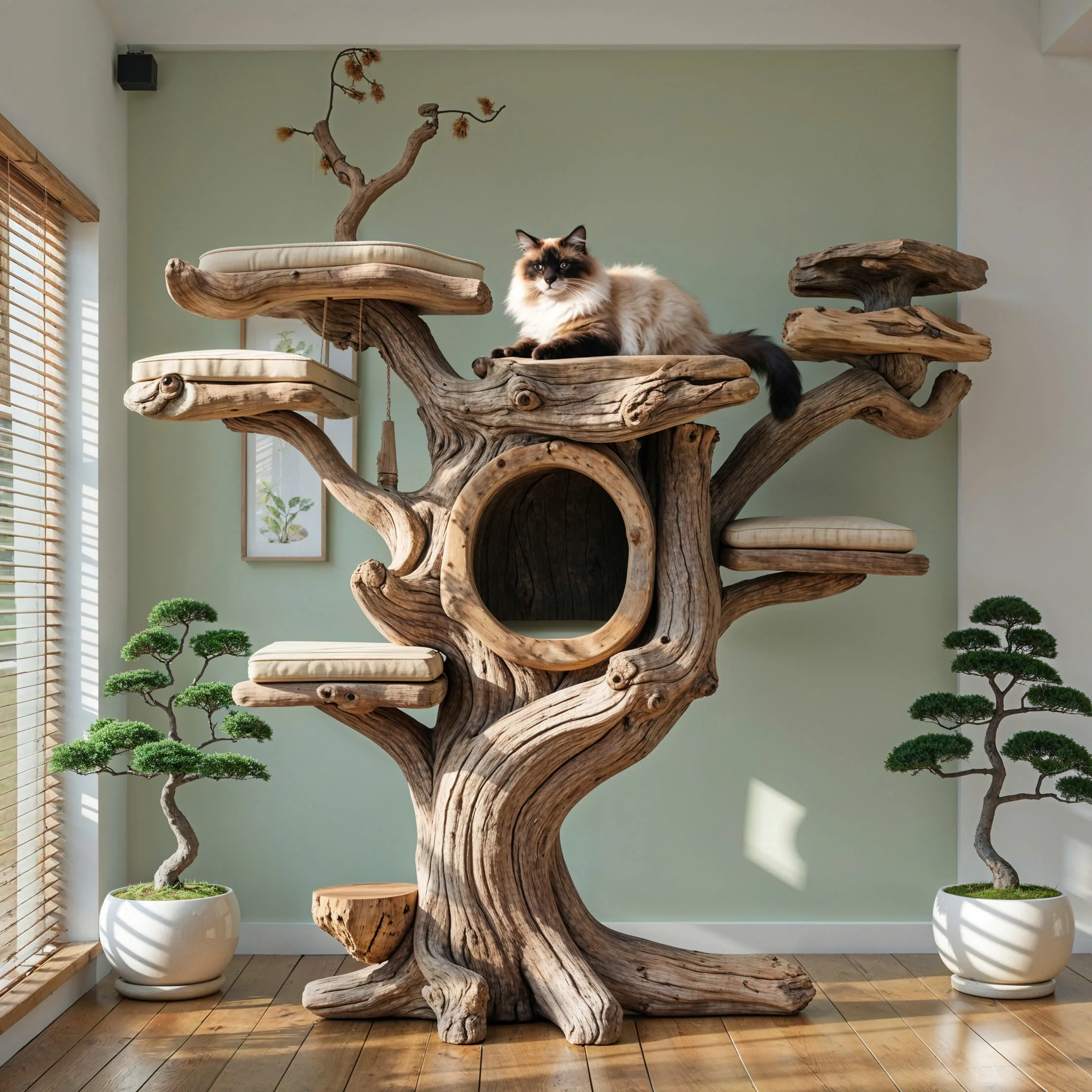
Refreshing the Look
You can repaint or re-oil driftwood annually to restore its original luster or shift its tone to match changing interiors.
Where to Find Natural Driftwood Cat Trees
Artisan Sellers and Online Shops
- Etsy artisans who specialize in eco-furniture
- Eco-pet boutiques that focus on sustainability
- High-end pet furniture brands that offer custom options
DIY and Tutorials
Plenty of DIYers share their driftwood cat tree builds on YouTube and Pinterest. Search for “DIY Driftwood Cat Tree” and you’ll be amazed at the creativity—and how achievable some designs really are.
Nature, Elevated for the Modern Cat
The rise of Natural Driftwood Cat Trees is more than a fleeting design trend—it’s a symbol of how far pet furniture has come. In an age where pets are family, and where sustainability matters more than ever, these creations blend beauty, function, and eco-conscious values in a way that’s nothing short of inspiring.
They connect our cats back to their wild roots, offering organic surfaces to scratch, climb, and explore. They ground our homes in earthy elegance, becoming sculptural centerpieces that invite curiosity and calm. And they represent a lifestyle—one that chooses authenticity, creativity, and kindness to the planet.
If you’re ready to give your feline the throne they deserve while elevating your living space to a gallery of natural art, there’s truly no better choice. With a Natural Driftwood Cat Tree, you’re not just building a playground. You’re growing a home—branch by branch.


